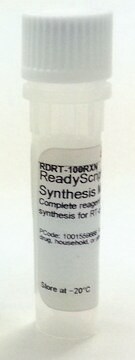10109118001
Roche
Reverse Transcriptase AMV
solution, >50 units/μg protein, suitable for RT-qPCR, suitable for RT-PCR
Synonym(s):
amv reverse transcriptase
About This Item
Recommended Products
form
solution
Quality Level
specific activity
>50 units/μg protein
feature
dNTPs included: no
hotstart: no
packaging
pkg of 1,000 U
manufacturer/tradename
Roche
storage condition
avoid repeated freeze/thaw cycles
parameter
42 °C optimum reaction temp.
technique(s)
RT-PCR: suitable
RT-qPCR: suitable
input
purified RNA
detection method
probe-based
General description
The enzyme can also be used for RNA sequencing, 3′ end labeling of DNA fragments, and the generation of ss probes for genomic footprints.
Reverse Transcriptase AMV requires a primer and Mg2+ or Mn2+ for activity.
Specificity
Heat inactivation: 5 min, 95 °C
Application
- First- and second-strand cDNA synthesis and synthesis of first strand cDNA for use in subsequent amplification reactions (RT-PCR)
- Dideoxy DNA sequencing
- Primer extension
- RNA sequencing
- 3′-end labeling of DNA fragments
- Generation of single-stranded probes for genomic footprint experiments
Features and Benefits
- Efficiently transcribes total RNA, mRNA, viral RNA and RNA rich in secondary structures
- Procure full length cDNA fragments up to 12 kb
- Higher thermostability (up to 60°C) and specificity than M-MuLV Reverse Transcriptase
Packaging
Quality
Function test: Reverse Transcriptase AMV is function tested in the cDNA Synthesis Kit and RT-PCR.
Unit Definition
Volume Activity: 20-25 U/μl. Please refer to the Certificate of Analysis for more information.
Preparation Note
Storage and Stability
Other Notes
Kit Components Only
- Reverse Transcriptase AMV 20-25 U/μl
- First-strand cDNA Synthesis Buffer 5x concentrated
Storage Class Code
12 - Non Combustible Liquids
WGK
WGK 1
Flash Point(F)
does not flash
Flash Point(C)
does not flash
Choose from one of the most recent versions:
Already Own This Product?
Find documentation for the products that you have recently purchased in the Document Library.
Customers Also Viewed
Related Content
RT-qPCR, or quantitative reverse transcription PCR, combines the effects of reverse transcription and quantitative PCR or real-time PCR to amplify and detect specific targets. RT-qPCR has a variety of applications including quantifying gene expression levels, validating RNA interference (RNAi), and detecting pathogens such as viruses.
Our team of scientists has experience in all areas of research including Life Science, Material Science, Chemical Synthesis, Chromatography, Analytical and many others.
Contact Technical Service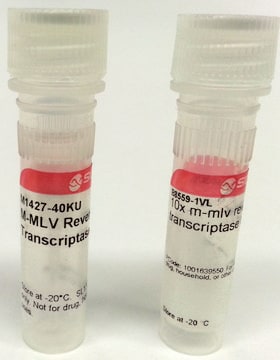

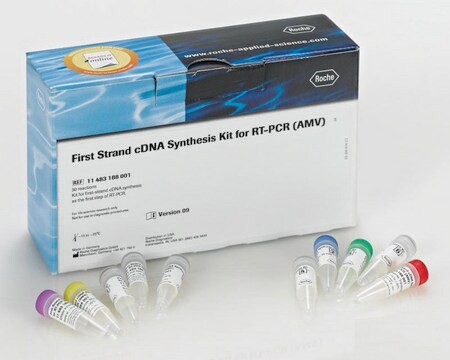

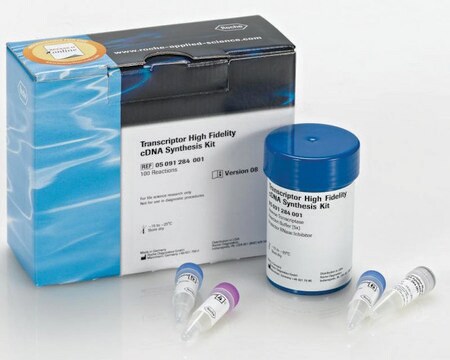
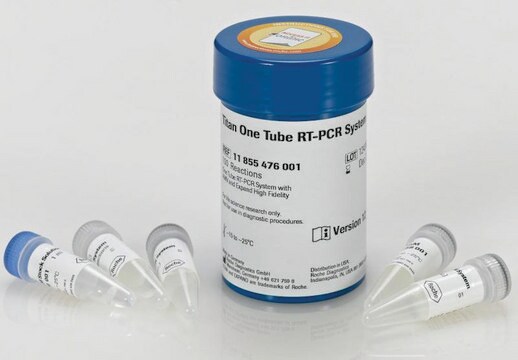
![Enhanced Avian Reverse Transcriptase [eAMV™ RT] For reverse transcription at higher temperatures & rare mRNAs](/deepweb/assets/sigmaaldrich/product/images/496/245/af9bcef6-1474-494b-8fba-32ca0fd56c42/640/af9bcef6-1474-494b-8fba-32ca0fd56c42.jpg)

